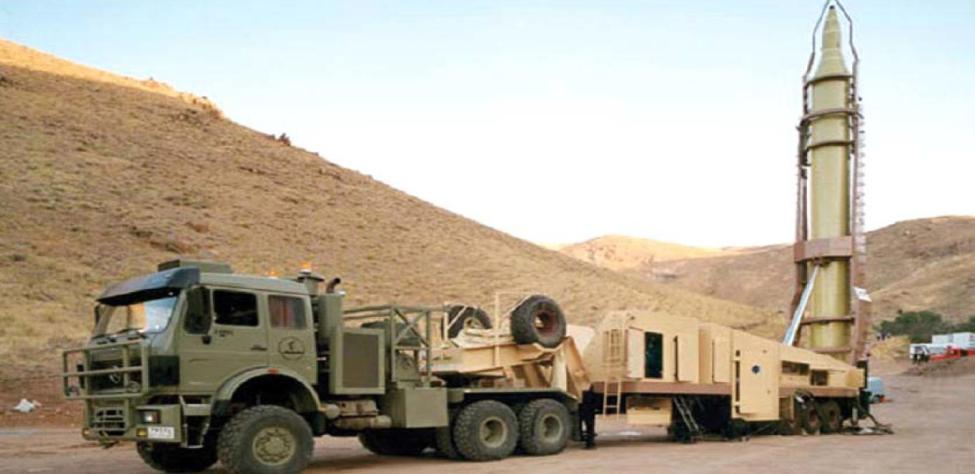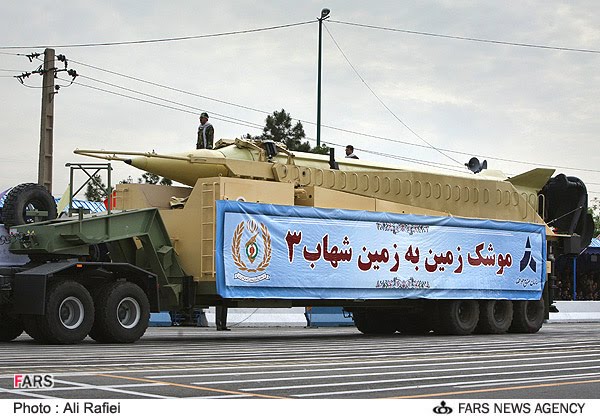The SiLent crY
SENIOR MEMBER

- Joined
- Nov 29, 2012
- Messages
- 3,530
- Reaction score
- 3
- Country
- Location
Iran's efforts to build long-range ballistic missiles and artillery with a high range can be divided into three periods .
First period : ( 1977 - 1979 )
Second period : During the years of war with Iraq ( 1980 - 1988 )
Third period : since end of war ( since 1988 )
Since the second period , manufacture of rockets and missiles entered a new phase and designing and producing them in a huge number was performed . ( The experience of 8 year war helped Iran to understand the influence of ballistic missiles and missile technology in War , defense strategy which led Iran to unlimited missile defense strategy ).
After the war , Iran tried to develop it's missile technology with the help of foreign experts who were driven from their country or were unemployed .
Solid Fuel :
The main foundation of using this fuel were Oghab and Shahin 2 missiles .
Iran used this technology systematically for it's field artillery which caused producing Fajr , Naze'at and Zelzal artillery groups . Initial efforts were supported by China's technical assistance and technology .
Many Assembly and manufacturing plant were built during the years from 1991 to 1992 . Iran with an incredible speed overtook china and was needless of china in producing .

Fajr 2

Fajr 3
Weight : 45 kg (HE Content) _ 90 kg (Warhead) _ 407 kg (Rocket)
Length : 10.45 m (Launcher) _ 5,200 mm (Rocket)
Width : 2.54 m (Launcher)
Height : 3.34 m (Launcher)
Caliber : 240 mm
Maximum range :43 km


Fajr 5
Weight : 90 kg (HE Content) _ 175 kg (Warhead) _ 915 kg (Rocket)
Length : 10.45 m (Launcher) _ 6.485 m (Rocket)
Width : 2.54 m (Launcher)
Height : 3.34 m (Launcher)
Caliber : 333 mm
Effective range : 68–75 km

Naze'at 6
Weight : 130 kg (Warhead) _ 960 kg (Rocket)
Length : 6.29 m
Width : 356 mm
maximum range : 100 km

Naze'at 10
Weight : 230 kg (Warhead) _ 1830 kg (Rocket)
Length : 8.02 m
Width : 455 mm
maximum range : 130 km
To be continued
First period : ( 1977 - 1979 )
Second period : During the years of war with Iraq ( 1980 - 1988 )
Third period : since end of war ( since 1988 )
Since the second period , manufacture of rockets and missiles entered a new phase and designing and producing them in a huge number was performed . ( The experience of 8 year war helped Iran to understand the influence of ballistic missiles and missile technology in War , defense strategy which led Iran to unlimited missile defense strategy ).
After the war , Iran tried to develop it's missile technology with the help of foreign experts who were driven from their country or were unemployed .
Solid Fuel :
The main foundation of using this fuel were Oghab and Shahin 2 missiles .
Iran used this technology systematically for it's field artillery which caused producing Fajr , Naze'at and Zelzal artillery groups . Initial efforts were supported by China's technical assistance and technology .
Many Assembly and manufacturing plant were built during the years from 1991 to 1992 . Iran with an incredible speed overtook china and was needless of china in producing .

Fajr 2

Fajr 3
Weight : 45 kg (HE Content) _ 90 kg (Warhead) _ 407 kg (Rocket)
Length : 10.45 m (Launcher) _ 5,200 mm (Rocket)
Width : 2.54 m (Launcher)
Height : 3.34 m (Launcher)
Caliber : 240 mm
Maximum range :43 km


Fajr 5
Weight : 90 kg (HE Content) _ 175 kg (Warhead) _ 915 kg (Rocket)
Length : 10.45 m (Launcher) _ 6.485 m (Rocket)
Width : 2.54 m (Launcher)
Height : 3.34 m (Launcher)
Caliber : 333 mm
Effective range : 68–75 km

Naze'at 6
Weight : 130 kg (Warhead) _ 960 kg (Rocket)
Length : 6.29 m
Width : 356 mm
maximum range : 100 km

Naze'at 10
Weight : 230 kg (Warhead) _ 1830 kg (Rocket)
Length : 8.02 m
Width : 455 mm
maximum range : 130 km
To be continued











































































 , the No Dong and the Shahab 3 employ a separating RV unit. The ability to build a two-stage missile (engine + re-entry vehicle) is potentially a significant intermediate step between short-range, low payload missiles (like ‘Scuds’
, the No Dong and the Shahab 3 employ a separating RV unit. The ability to build a two-stage missile (engine + re-entry vehicle) is potentially a significant intermediate step between short-range, low payload missiles (like ‘Scuds’





